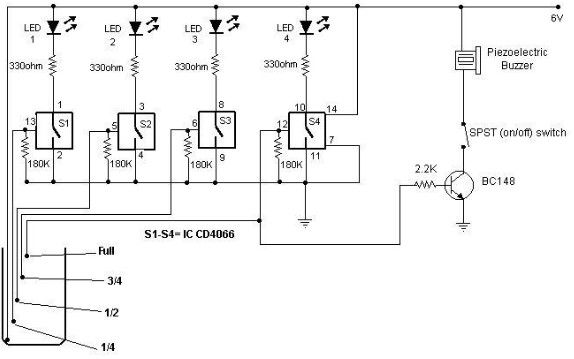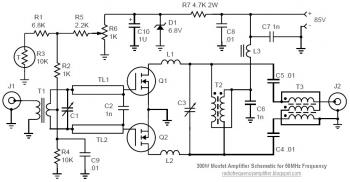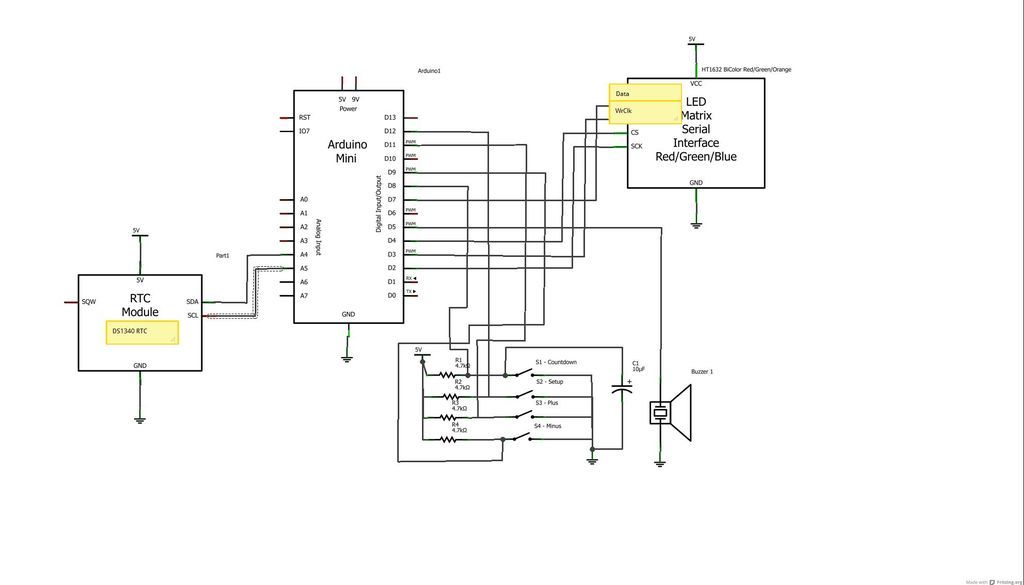
Water level indicator circuit using CMOS ICs

A simple and cost-effective water level indicator circuit can be designed using this schematic. This water level indicator utilizes a CMOS IC CD4066 to indicate the amount of water present in an overhead tank and to provide an alarm when the tank is full. When the water level is low, the wires in the tank are open-circuited, causing a 180 kΩ resistor to pull the switch low, which results in the LEDs being turned off. As water begins to fill the tank, the wire connected to S1 and the positive supply is bridged by the water, closing switch S1 and activating LED1. As the water level continues to rise, LEDs 2, 3, and 4 illuminate sequentially. Once the tank is full, the water raises the base of transistor BC148, saturating it and activating the buzzer. To turn off the buzzer, the SPST switch must be opened.
The water level indicator circuit operates on a straightforward principle utilizing the conductive properties of water. The circuit is primarily composed of the CMOS IC CD4066, which serves as a quad bilateral switch, facilitating the control of LED indicators based on water levels. The circuit includes a series of resistors, specifically the 180 kΩ resistor, which plays a crucial role in ensuring that the switch remains open when the water level is low, thus keeping the LEDs off.
As water fills the tank, it completes the circuit between the sensing wire and the switch (S1), allowing current to flow and subsequently turning on LED1. The sequential illumination of additional LEDs (LED2, LED3, and LED4) is achieved through a cascading arrangement that detects incremental water levels. Each LED corresponds to a specific range of water levels, providing visual feedback regarding the tank's status.
When the water reaches its maximum level, it triggers the transistor BC148. The base of the transistor receives a high signal, causing it to enter saturation and activate the buzzer, which serves as an audible alarm to notify users that the tank is full. The inclusion of an SPST switch allows for manual control to deactivate the buzzer when necessary.
This design is particularly beneficial for applications in residential and agricultural settings where monitoring water levels is essential for efficient resource management. The simplicity of the circuit makes it easy to assemble and implement, while the use of common electronic components ensures low production costs. Overall, this water level indicator circuit is an effective solution for continuous monitoring and alerting for overhead water tanks.A very simple low cost water level indicator circuit can be designed using this schematic circuit. This water level indicator is based on a simple CMOS IC CD4066 and indicates the amount of water present in the overhead tank and also gives an alarm when the tank is full. When the water is empty the wires in the tank are open circuited and the 180 K resistors pulls the switch low hence opening the switch and LEDs are OFF. As the water starts filling up, first the wire in the tank connected to S1 and the + supply are shorted by water. This closes the switch S1 and turns the LED1 ON. As the water continues to fill the tank, the LEDs2, 3 and 4 light up gradually. When the water is full, the base of the transistor BC148 is pulled high by the water and this saturates the transistor, turning the buzzer ON.
The SPST switch has to be opened to turn the buzzer OFF. 🔗 External reference
The water level indicator circuit operates on a straightforward principle utilizing the conductive properties of water. The circuit is primarily composed of the CMOS IC CD4066, which serves as a quad bilateral switch, facilitating the control of LED indicators based on water levels. The circuit includes a series of resistors, specifically the 180 kΩ resistor, which plays a crucial role in ensuring that the switch remains open when the water level is low, thus keeping the LEDs off.
As water fills the tank, it completes the circuit between the sensing wire and the switch (S1), allowing current to flow and subsequently turning on LED1. The sequential illumination of additional LEDs (LED2, LED3, and LED4) is achieved through a cascading arrangement that detects incremental water levels. Each LED corresponds to a specific range of water levels, providing visual feedback regarding the tank's status.
When the water reaches its maximum level, it triggers the transistor BC148. The base of the transistor receives a high signal, causing it to enter saturation and activate the buzzer, which serves as an audible alarm to notify users that the tank is full. The inclusion of an SPST switch allows for manual control to deactivate the buzzer when necessary.
This design is particularly beneficial for applications in residential and agricultural settings where monitoring water levels is essential for efficient resource management. The simplicity of the circuit makes it easy to assemble and implement, while the use of common electronic components ensures low production costs. Overall, this water level indicator circuit is an effective solution for continuous monitoring and alerting for overhead water tanks.A very simple low cost water level indicator circuit can be designed using this schematic circuit. This water level indicator is based on a simple CMOS IC CD4066 and indicates the amount of water present in the overhead tank and also gives an alarm when the tank is full. When the water is empty the wires in the tank are open circuited and the 180 K resistors pulls the switch low hence opening the switch and LEDs are OFF. As the water starts filling up, first the wire in the tank connected to S1 and the + supply are shorted by water. This closes the switch S1 and turns the LED1 ON. As the water continues to fill the tank, the LEDs2, 3 and 4 light up gradually. When the water is full, the base of the transistor BC148 is pulled high by the water and this saturates the transistor, turning the buzzer ON.
The SPST switch has to be opened to turn the buzzer OFF. 🔗 External reference





